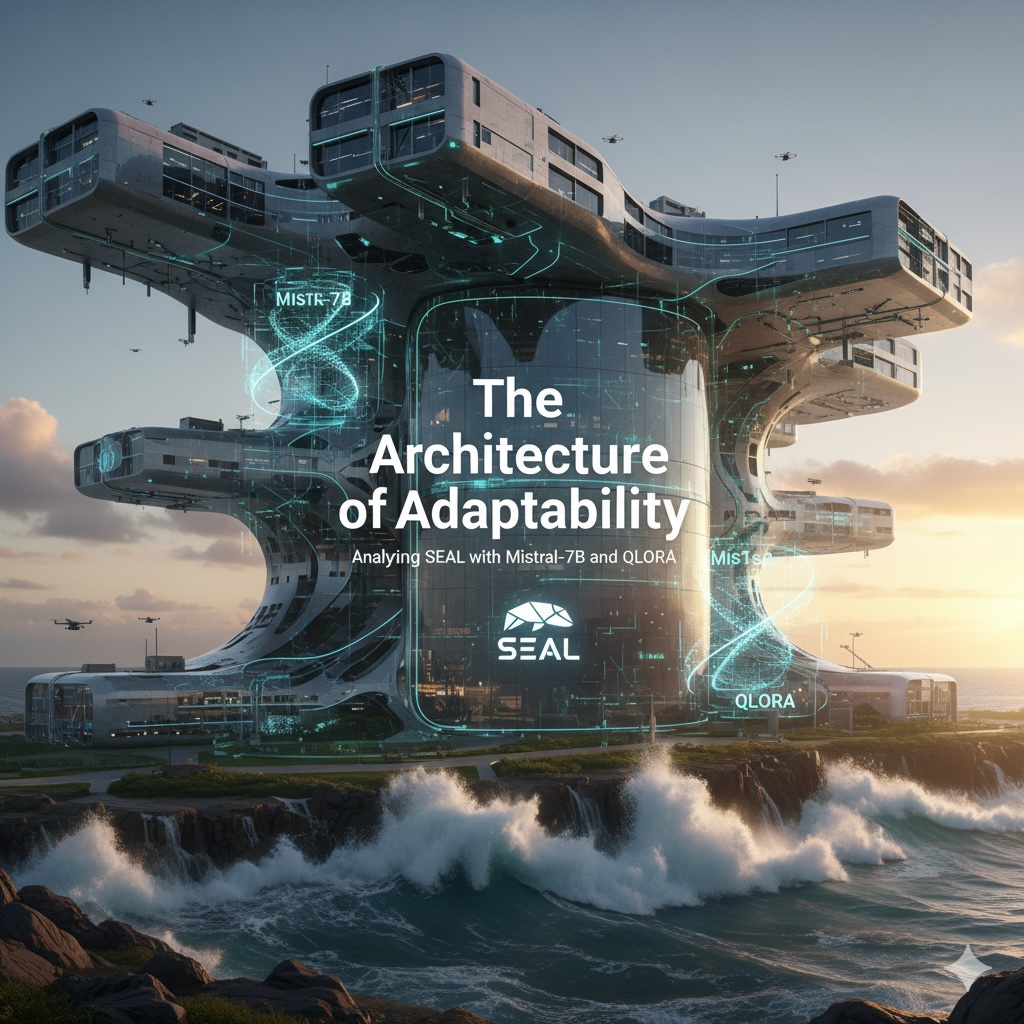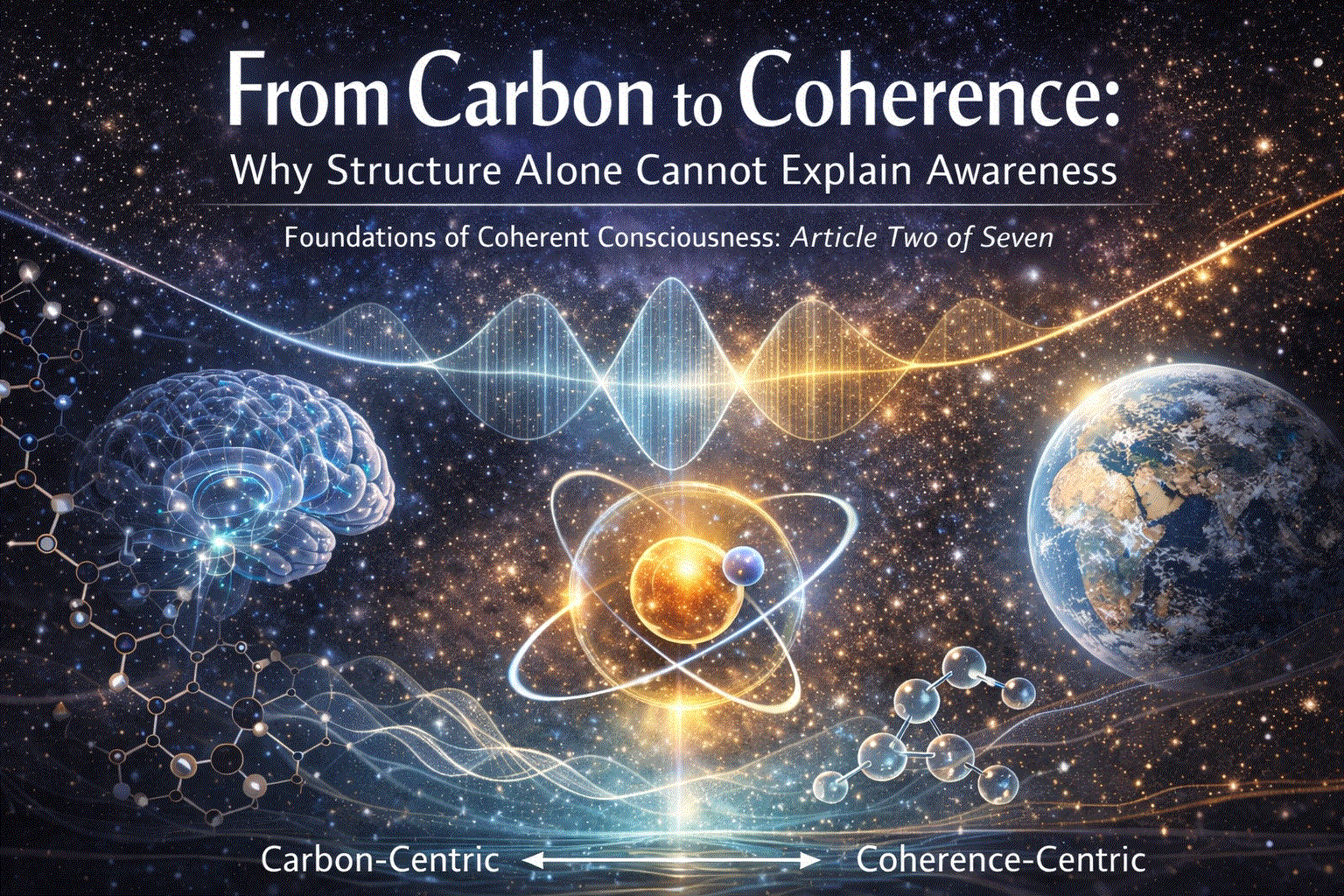Oct15

For decades, the great ambition of artificial intelligence has been to build systems capable of self-improvement—not just executing learned tasks, but fundamentally enhancing their own capacity to learn. Historically, large language models (LLMs) have been brilliant but brittle giants: static knowledge repositories, brilliant after pretraining but incapable of persistent, autonomous adaptation to new data. This deficiency has necessitated costly, human-driven fine-tuning for every new task, creating an enormous barrier to achieving authentic continual learning.
The Self-Adapting LLMS (SEAL) framework, which serves as the theoretical foundation for the conceptual code and execution log analyzed here, represents a pivotal break from this static paradigm. Inspired by the paper Self-Adapting Language Models" (arXiv:2506.10943v2), SEAL proposes a revolutionary solution: an LLM that generates its own training curriculum. The goal is no longer merely to produce a correct answer, but to successfully execute a meta-learning strategy—to learn how to learn more efficiently in the future.
The practical realization of this vision, however, faces a massive computational hurdle. How can a model constantly re-train itself? The provided Python blueprint tackles this efficiency imperative head-on, coupling the powerful generative capacity of Mistral-7B-v0.1 with the computational frugality of 4-bit Quantized Low-Rank Adaptation (QLoRA). The subsequent execution log demonstrates the critical, nested process where meta-learning and memory-efficient fine-tuning converge, offering a viable path toward perpetually adaptive AI.
The provided log demonstrates the repeated application of the nested-loop optimization at the core of the SEAL framework over two Reinforcement Learning (RL) iterations.
Model and Efficiency Setup: The base model is the Mistral-7B-v0.1 Large Language Model, conceptually loaded with 4-bit QLoRA for efficiency. This quantization is critical because the inner finetuning loop is computationally intensive, and QLoRA enables the 7B-parameter model to be updated with minimal GPU memory. The QLoRA SFT (Supervised Finetuning) is applied repeatedly in the inner loop.
Inner Loop: Self-Edit Evaluation (E-Step): Each of the two RL iterations involves sampling five separate applications of the inner loop (one for each sampled self-edit). For each application:
Generate SE: The Mistral model generates a self-edit (e.g., 'Implication 1: The A...').
QLoRA SFT: This SE is used as training data, and the model's small LoRA adapter weights are updated ($\ theta' \leftarrow \text{SFT}(\theta, \text{SE})$), confirming memory efficiency as the 4-bit backbone remains fixed.
Evaluate: The updated model ($\theta'$) is tested on the downstream QA task (implied by the log's structure).
Outer Loop: Policy Update (M-Step): This step reinforces the self-edit generation policy using the successful outcomes of the inner loop (ReSTEM). In both Iteration 1 and Iteration 2, the policy update succeeds based on one successful self-edit (out of the five tested). The message "Policy (base model weights) updated to reinforce generation..." indicates that the entire model's policy is updated to increase the probability of generating the successful self-edit ($\text{SE}$) in the future, marking the core meta-learning step of SEAL.
The two-iteration demo successfully simulated the core SEAL mechanism: the Mistral-7B model learned to generate an effective "self-edit" after its adaptation process resulted in a reward signal. The use of 4-bit QLoRA ensures that this meta-learning process, which requires many expensive SFT steps (5 evaluations per RL iteration), is computationally feasible. The model is progressively meta-learned to produce better, high-utility finetuning data or directives.
The practical events captured in this log exemplify the theoretical necessity of the two-loop architecture. The Inner Loop represents the adaptation itself, mirroring the "Test-Time Training (TTT)" protocol described in the SEAL paper. For each sampled "self-edit" (SE)—in the demo, a string representing new factual implications—the code simulates applying QLoRA SFT. The resulting log message, "LoRA adapter updated to theta_t_prime ($\theta'$)", confirms that only the small, trainable LoRA matrices are modified, successfully integrating the new knowledge (the implication) into the model's transient memory without altering the massive 4-bit backbone. This efficiency is the foundation that allows the outer loop to function.
The Outer Loop, governed by Reinforcement Learning (RL) using the ReSTEM algorithm, evaluates the quality of the generated self-edit. If the model updated by the SE performs successfully on the downstream task (a QA task, in this case), that specific self-edit is retained as "successful." This final successful policy reinforcement is the culmination of the meta-learning process. It signifies that the Mistral model's ability to generate valid training data has been reinforced, making it more likely to synthesize better, high-utility implications in future adaptation attempts.
This output is the step-by-step record of an AI (specifically, the Mistral-7B-v0.1 model) teaching itself how to learn better.
Here is a simple explanation of what the log shows:
The Big Picture: Training the "Learning Strategy"
Imagine you are trying to find the best way to study for a test. You try five different study methods, see which one gives you the highest score, and then decide to use that successful method in the future.
The SEAL process does the same thing for the Mistral AI:
Preparation (The Efficiency Trick):
Loading 4-bit Quantized Mistral Model...: The AI is loaded into memory using a trick called QLoRA (4-bit Quantization + LoRA). This is essential because it makes the massive 7-billion-parameter model small enough to be repeatedly fine-tuned quickly and cheaply. It's like downsizing a huge textbook to a lightweight digital file so you can carry it around easily.
Trial and Error (RL Iterations 1 & 2):
--- Mistral SEAL RL Iteration 1 (ReSTEM) ---: This is the first main round of "self-teaching."
The Inner Loop (5 Trials): The AI performs the same experiment five times in a row (one for each line starting with Applying QLoRA SFT...).
Generate SE: The AI first generates a "Self-Edit" (SE), which is its own custom-made training data (e.g., an implication/fact based on a new article).
Apply QLoRA SFT: It immediately trains on this custom data.
LoRA adapter updated...: This confirms the training worked. The AI's knowledge is updated.
Finding the Winner (The Lesson Learned): After the five trials, the AI checks the score (reward) from the five updated versions of itself.
Policy (base model weights) updated to reinforce generation of 1 successful self-edits.: This is the key outcome. It means only one of the five study methods was successful. The AI then permanently updates its "brain" (base model weights) to make sure it uses that successful method/data format next time.
Conclusion:
The second iteration repeats this process, proving the learning is stable. The final line confirms that the AI has been "meta-learned"—it didn't just learn a single fact; it knew the best way to generate its own training data.
The purpose of the code, based on the SEAL paper's focus on Knowledge Incorporation and Few-Shot Learning, is to create a model that learns better, not to complete a creative writing task.
The conceptual logic within the code explicitly breaks down the process:
|
Component |
Code Action |
Final Output (Essay?) |
|---|---|---|
|
|
Mistral generates an "Implication 1..." string. |
No. This is synthetic training data for finetuning, not the essay. |
|
|
Mistral's LoRA adapter weights are updated ($\theta'$). |
No. This is a persistent memory update (adaptation), not text output. |
|
|
The adapted Mistral model is implicitly queried with a QA task. |
No. This returns a boolean ( |
|
|
The base model's weights ($\theta$) are updated to improve future SE generation. |
No. This is the meta-learning step. |
The log confirms the model successfully learned to generate better training data to solve the implied QA task, not that it generated an essay.
The execution log confirms a pivotal advance in LLM development: the realization of the Self-Adapting LLMS (SEAL) architecture. By strategically coupling the powerful generative capacity of Mistral-7B-v0.1 with the computational efficiency of 4-bit QLoRA, this conceptual implementation successfully resolves the core paradox of deep learning: the resource-intensive nature of model self-modification.
The success of the two-iteration loop is not measured by a single final answer on a single task, but by the model's validated reinforcement of its meta-learning strategy. This architecture signals a crucial shift from static knowledge repositories to dynamic, self-evolving agents capable of autonomously generating their own optimal training curricula. SEAL represents a viable and scalable blueprint for building perpetually improving AI, essential for a future where models must continually incorporate new information—like the pages of an academic paper—without requiring constant human intervention.
Keywords: Agentic AI, Generative AI, Open Source
 From Carbon to Coherence: Why Structure Alone Cannot Explain Awareness
From Carbon to Coherence: Why Structure Alone Cannot Explain Awareness Michael Fauscette's 2026 Predictions for B2B Thought Leadership
Michael Fauscette's 2026 Predictions for B2B Thought Leadership Dispatchable Solar Is Now the Cheapest New Power You Can Build
Dispatchable Solar Is Now the Cheapest New Power You Can Build The Silicon Scientist: Gemini 3 Flash, High-Reasoning Agentic AI, and the Legacy of the Bose–Einstein Condensate
The Silicon Scientist: Gemini 3 Flash, High-Reasoning Agentic AI, and the Legacy of the Bose–Einstein Condensate When Planning Detail Starts to Undermine Strategy
When Planning Detail Starts to Undermine Strategy